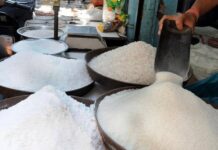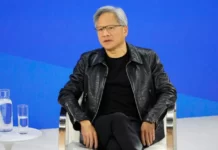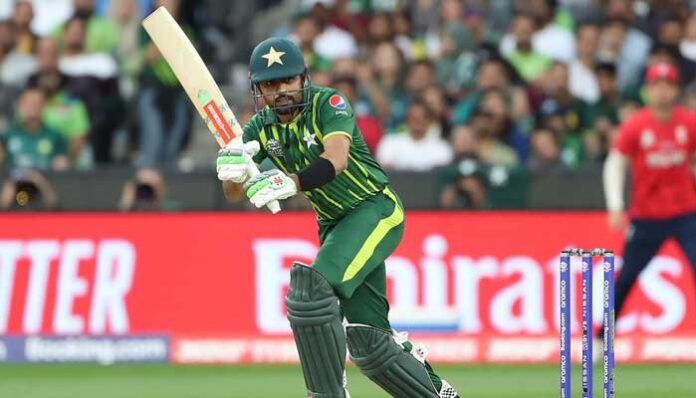When one thinks of sports based sponsorships, Michael Jordan, Christiano Ronaldo, Lebron James, Lionel Messi and Roger Federer come to mind. These deals are worth millions and billions of dollars and there is a symbiotic relationship between the sports brand and the athlete. The name of the brand and the athlete become so interlinked that just recalling the name of the players also brings to mind the sportswear company that sponsors them.
In the case of Jordan, Nike developed a whole line of sneakers under the label of AirJordan that have become a phenomenon unto themselves. Even after the player has retired, the brand alone is worth billions of dollars in the form of sales to the company and the sales have justified this venture many times over.
In the modern age of social media, there is an infinite amount of exposure of brands as marketing has become more organic with people sharing images and pictures themselves. As media becomes more democratized, there is a movement towards advertising being carried out organically.
In 2020, Gray-Nicolls announced that they had signed a deal with Babar Azam. Watching him play one of his trademark cover drives and you will see the company’s name emblazoned on the blade of the bat. During his partnership with the company, he was able to earn a spot as the captain in the ICC’s ODI Team of the year and was named the ICC Cricketer of the Year for 2022 winning the prestigious Garfield Sobers award.
Gray-Nicolls is an English brand renowned for manufacturing equipment including bats, helmets, pads and gloves. Gray-Nicolls is a collection of brands operating under the banner of Grays International which also houses brands like Gilbert Rugby, Gilbert Netball and Grays which manufactures field hockey equipment.
So why is it that they do not sell their equipment in Pakistan? Especially considering there is a company already in Pakistan which works closely to their English counterpart.
A company by the name of Grays of Cambridge Pakistan was set up in 1964 as a joint venture between Grays of Cambridge International. The company initially joined hands to produce hockey sticks and then branched out into production of cricket balls with an association with Duke & Sons and Gray-Nicolls.
Knowing these facts, why is it that the company is not producing, advertising or marketing its products in Pakistan by using one of the most recognizable faces and names in the country?
The reality is that the company might be a victim of its own success. Profit explains.
Grays of Cambridge
Grays International is an English company which is involved in production of sports equipment. The company was founded in 1855 by H.J Gray and the company was called H.J Gray and Sons initially. The company initially started with making wooden racquets and in 1941 it was merged with hockey stick manufacturers J Hazells to form Grays Hockey. It also acquired the cricket bat business of L.J Nicolls to form Gray-Nicolls. The company is currently involved in producing cricket, field hockey, netball, rugby and tennis equipment which are each overseen by a brand of the company.
In 1964, a company was incorporated in Pakistan under the name of Grays of Cambridge Pakistan Limited. The company was set up by Anwar Khawaja who was the first Managing Director of the company. The company was going to be a joint venture with H.J Gray & Sons in England and the goal was to produce the world’s best hockey stick. An agreement was signed in 1963 and the company started production in 1965. In order to gain knowledge and the technical skills, services of English technician D Fosket were used who had been producing hockey sticks by hand for more than 50 years. Pakistani workers learned the skills and were able to become the new torch bearers by learning through his expertise and ability.
So why would such a huge brand venture into another country?
The benefit of the joint venture with Grays in Pakistan was that as the sport of hockey was becoming popular in the subcontinent, there was a growing popularity of shorter Indian heads. These hockeys were known as Mulberry Indian Heads which had toweling grips and a distinct flash of orange on the blade. This made it recognizable anywhere on the field. The facility in Pakistan was primarily used to manufacture these hockeys. The Pakistani factory was the one that produced the Grays Karachi King hockey which became renowned the world over. These hockeys were the gold standard for 30 years in the world of hockey.
The prowess of the Grays hockey stick could be seen in the fact that Pakistan won its first hockey World Cup in 1971 in Spain using Grays hockeys. Tune into any match being played today and you will see many of the hockeys being used would have the Grays signage on them.
In the 1970s, fiberglass reinforcements were used for the first time with the launch of Karachi King Super. As the sport went from grass to Astroturf, tougher composites were used to make more powerful sticks and better grips for the players. In 1983, the company was selling 90,000 sticks per year and with technical cooperation with Mr Toon Coolen of Netherlands, the company mechanized the production of hockey sticks while maintaining the human touch.
The success of the English company also meant that its Pakistani partner was seeing a growth in its revenues. The company was producing and exporting 17,000 sticks per year in 1964 which surpassed 150,000 per year by 2023. The company was also able to manufacture cricket balls with the association of Duke & Sons and Grays-Nicolls and produced around 100,000 hand stitched balls last year. These balls are used by the International Cricket Council at the International level as well.
Grays of Cambridge became a public limited company in 1985 and was listed on the stock exchange in 1987. Since it was listed, the company has given out a steady stream of dividends to its investors and has proven to be a sound investment based on its revenues and share price.
Financial Performance
The financial performance of the company shows that it is not only performing well but actually thriving in the current environment. The company saw revenues of Rs 69.1 crore in 2023 compared to Rs 23.8 crore last year. Most of these revenues were driven by exports of hockey sticks, cricket balls and other equipment that the company produces. This was a huge jump for the company which had averaged revenues of Rs 25 crores over the last decade. The company enjoys a healthy gross profit margin of 35% and is able to generate a net profit margin of 20% on average. They have been able to do so even in the face of headwinds in the form of rising costs as they are able to transfer much of the increase in their costs onto their customers.
Profitability since its inception has meant that the company has been able to amass retained profits which are used to finance much of its operations. The company has seen its shareholder’s equity triple since 2014 and the trend is expected to continue long into the future. Having ample profits also means that the company has a massive amount of working capital on its hand. This means that the company is able to carry out production on a sustainable basis without having to rely on additional capital or loans.
Based on its product quality and attention to detail, the company has been able to build a network of dealers around the world. The quality control and commitment of the company to its products is evident by the fact that most of the sales the company carries out is in the form of exports. By following international standards, the company has been able to export a large amount of hockeys and hockey sticks are still considered to be one of the best in the world.
The biggest sign of approval and trust can be seen in the numbers. One of the biggest strengths of the company is the fact that the company earned revenues of Rs 67.8 crores from exports which constitute 98% of its revenues while only 2% was earned from local sales. From total exports, half was earned through sales carried out in the UK while Australia, South Africa and Sri Lanka were the next top countries it sells to. This shows that the hockeys that are being produced are top notch and there is a demand for their product.
But is its biggest strength also becoming its biggest problem?
The unaffordability of its goods
As the company looks to produce and sell products of a high quality, it means that the selling price of these goods comes out to be much higher. Starting from expensive raw materials and then applying highly skilled labour means that once the goods are finished, the price that is charged for them is much higher. Even though the price is justified, there is still a huge disparity in terms of people being able to buy it.
Go to any local shop selling sports equipment and you will see that none of the shops actually carry any of the goods that are produced by Grays. Local shops usually carry cricket bats from companies like HS-51, CA, Malik or AS. These are mostly brands that are local and are a much cheaper alternative to the bats that are being produced by Grays. They use cheaper raw materials and labour and still produce a decent product at an affordable price.
It is the same for hockey sticks where much more affordable options are available from companies like Sachin which produce a lower quality product but are much cheaper and affordable. For athletes who want to use hockey sticks or cricket bats, it is much more feasible to buy a cheaper local option.
So it seems that the higher quality of Grays equipment actually ends up hurting it in the Pakistani market. Its insistence on English willow and ability of a trained craftsman makes it attractive to the foreign market while the local consumer is not able to pay such a high price.
Case in point. The bat that is associated with Babar Azam is called the Babar Azam Pro Edition Tempesta 1.3. This bat is produced by Grays-Nicolls in the UK. Now based on Azam being a brand ambassador, the company could look to set up a plant locally and produce these bats. The name and fame of the player would justify such a plant being set up.
Even if Grays Pakistan does not look to set up their own production plant and produce this bat, these bats can be imported. Grays of Cambridge can provide the product and after sales service of changing grips, fixing the bats or provide support to the customers which is not prevalent in the market.
That is where the problem begins. Even though it would make sense to use the brand name of the player, the demand is not there.
The bat is quoted at £600 on the company’s own website. By the time this bat reaches Pakistan, the price of this bat will be Rs 2.5 lakhs. Who in their right mind would want to invest so much money on a bat lasting 5 to 7 years when they can buy a Malik bat for a fraction of that price. For the uber fans of Babar, they can buy a copy of the Tempesta at local sites for Rs 90,000.
The economic reality of the situation would suggest that the company does not see this avenue as the profitability or revenues expected do not justify such a large gamble to be taken.
The same case holds for hockeys. A top of the line Grays composite hockey costs around Rs 1 lakhs to a hockey player in Pakistan. A similar hockey from Sachin sports will be Rs 10,000.
In the end, it does seem kind of ironic that Grays is able to produce sporting goods of such high quality and export them rather than sell its goods locally. The brand ambassadorship being given to Babar Azam speaks to the fact that he is seen as the representative of the company to the world rather than to the country alone.
King Babar rules the world. Just not in terms of sales of Grays-Nicolls in Pakistan.

























